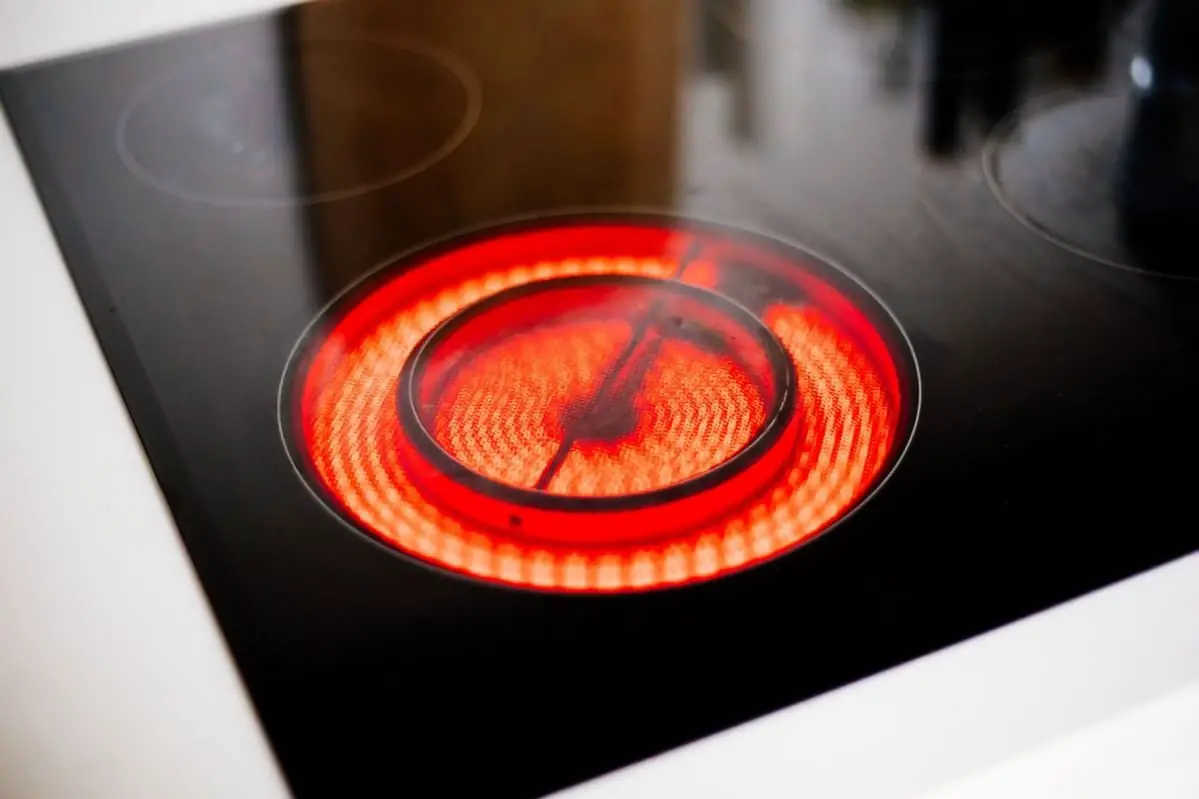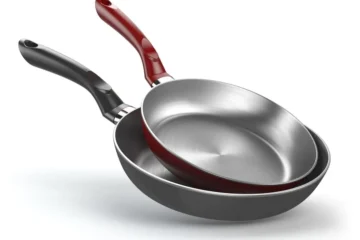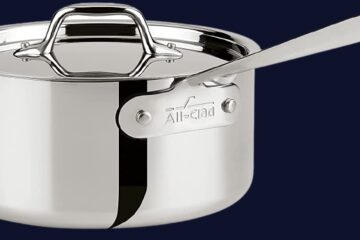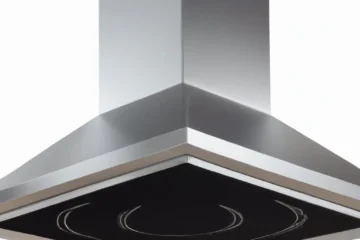If you’re considering investing in a halogen cooktop for your kitchen, you may be wondering what it is, how it works, and what the advantages are.
This guide will answer all your questions and give you an understanding of the various features and benefits of halogen cooktops. We’ll discuss the types of halogen cooktops, the pros and cons of using one, and how to use a halogen cooktop safely. By the end of this guide, you’ll have a clear understanding of what a halogen cooktop is and if it’s the right choice for you.
What Is A Halogen Cooktop?
A halogen cooktop is a stove that uses a halogen bulb as its heating element. The halogen bulb is encased in a quartz tube placed in the cooktop’s center. The heat generated by the bulb is then transferred to the cookware through the glass cooktop surface. Halogen cooktops are known for their fast heating times and precise temperature control, making them a popular choice for home cooks and professional chefs.
How Does A Halogen Cooktop Work?
A halogen cooktop uses a halogen bulb as a heat source. The bulb is typically encased in a ceramic or glass ring on top of the cooktop. When the cooktop is turned on, electricity flows to the halogen bulb, causing it to heat up. The heat is then transferred to the cookware placed on the ceramic or glass ring. Because the heat is generated by a bulb rather than a heating element, a halogen cooktop can heat up more quickly and be more responsive to temperature adjustments than a traditional electric cooktop.
What Is A Halogen Light Oven?
A halogen oven, also known as a halogen convection oven, is a type of countertop cooking appliance that uses a combination of halogen heat, convection, and infrared technology to cook food. It typically features a transparent cooking bowl that surrounds a halogen heating element, which heats the bowl and the food inside.
The convection aspect of the oven uses a fan to circulate hot air around the food, which helps to cook it evenly. Infrared technology is used to brown and crisp the surface of the food. Halogen ovens are often marketed as a compact, versatile and convenient alternative to traditional ovens.
What Is A Halogen Stove?
A halogen stove is a heat source that uses a halogen bulb to heat the air around it, creating a hot and dry environment that can be used for cooking or heating. These stoves are designed to produce minimal smoke while still being able to take advantage of the high BTU output of halogens.
What Is A Halogen Cooker?
A halogen cooker is a powerful kitchen equipment designed to cook food quickly and efficiently. Halogen cookers are commonly used in restaurants and other commercial kitchens but are also available for home use. The most common types of halogen cookers are gas and electric models.
How Is A Halogen Cooktop Better Than Gas Cooktops?
A halogen cooktop is considered better than a gas cooktop in a few ways. One of the main benefits of a halogen cooktop is that it heats up more quickly than a gas cooktop. This means you can start cooking your food sooner, saving time and energy.
Furthermore, halogen cooktops are more energy-efficient than gas cooktops, which can help you save money on your energy bills over time. They also usually have more precise temperature control, allowing them to cook at a precise temperature and can be adjusted with greater precision. This is particularly useful for delicate dishes or precise cooking tasks like melting chocolate, making sauces, etc.
Another benefit of halogen cooktops is that they produce less heat than gas cooktops, so your kitchen will stay more relaxed while you’re cooking. This can be especially helpful during the summer when you don’t want to add extra heat to your home. Additionally, because halogen cooktops don’t use an open flame, they’re considered safer than gas cooktops, which can be a concern for some people.
The Various Types Of Halogen Cooktops
A few different types of halogen cooktops are available on the market.
Countertop halogen cooktops: These are designed to sit on a countertop and can be used as a portable cooking surface. They typically come with one or two heating elements. They are ideal for small kitchens or people needing different cooking surfaces.
Built-in halogen cooktops: These are designed to be installed into a kitchen counter and can be integrated into the overall kitchen design. They typically come with multiple heating elements and are ideal for large kitchens or people who want a more permanent cooking surface.
Touch controls halogen cooktops: This type of built-in halogen cooktop has the control knobs replaced with digital touch controls. These are the convenient and modern versions of the traditional halogen cooktops.
Induction halogen cooktops: This type uses halogen heating elements and induction technology. With Induction-halogen technology, the heat is generated on the induction cooktop’s surface rather than under the cookware, providing precise temperature control and greater energy efficiency.
Is A Halogen Cooktop The Same As Induction?
No, a halogen and an induction cooktop are not the same.
A halogen cooktop uses halogen heating elements to cook food. These heating elements typically consist of tungsten wire enclosed in a quartz or ceramic tube filled with halogen gas, such as iodine or bromine. The halogen gas reacts with the tungsten wire, causing it to heat up and produce infrared radiation used to cook food.
On the other hand, an induction cooktop uses induction heating to cook food. In an induction cooktop, an alternating current runs through a coil of copper wire beneath the cooktop surface, which generates a magnetic field. When a ferromagnetic pot or pan is placed on the cooktop surface, the magnetic field induces an electrical current in the pot or pan, generating heat and cooking the food.
Therefore, halogen and induction cooktops work on different principles and have different ways of heating up and cooking the food. An induction cooktop is more energy efficient than a halogen cooktop. Some cooktops are hybrid, and they use both Induction and halogen together. They are called Induction-Halogen Cooktops.
What Is A Halogen Hob Cooker?
A halogen hob cooker is a stove that uses halogen bulbs as a heat source. These bulbs are encased in a ring-shaped heating element, which sits on top of a smooth glass surface. Because the heat is generated by the bulbs and not by gas or electric coils, the hob’s surface remains cool to the touch, making it safer to use.
The halogen hob is a radiant stove that heats the pot or pans directly rather than heating the surface. They are similar to ceramic hobs but have the added advantage of heat being radiated from a light source, hence heating up faster.
What’s The Difference Between Induction And Halogen?
Halogen Cooktop Vs. Induction:
An induction cooktop uses electromagnetic fields to generate heat directly in the pot or pan rather than using heat to warm the cooktop and then transferring that heat to the pot or pan. This makes them more energy efficient and safer to use because the cooktop remains cool to the touch. Induction cooktops also tend to heat up and cool down more quickly than other types of cooktops.
A halogen cooktop uses a halogen lamp as a heat source. The lamp is encased in a transparent cooktop surface, and the heat is transferred through the glass to the pot or pan. Halogen cooktops tend to heat up quickly, but they can be expensive.
Is Halogen The Same As Ceramic?
No, halogen and ceramic are not the same.
As we explained, a halogen cooktop uses a halogen lamp as a heat source. The lamp is encased in a transparent cooktop surface, and the heat is transferred through the glass to the pot or pan. Halogen cooktops tend to heat up quickly, but they can be expensive.
On the other hand, a ceramic cooktop uses electrical heating elements embedded in a ceramic glass surface. The cookware is placed directly on the ceramic surface, which heats up and transfers heat to the pot or pan. Ceramic cooktops can be slower to heat up than halogen cooktops, but they are generally more durable and less expensive.
What Are The Disadvantages Of A Halogen Oven?
Halogen ovens have several disadvantages compared to traditional ovens or cookers. Some of the main disadvantages include the following:
Cost: Halogen ovens are more expensive than other types, making them less accessible for some people.
Size: Halogen ovens are generally smaller than traditional ovens, making them less suitable for cooking large meals or for households with many people.
Limited Cooking options: Halogen ovens are often limited in their cooking capabilities, typically not able to reach higher temperatures, or have poor convection, which can make it challenging to cook certain dishes.
Safety: Because halogen ovens use a bulb to generate heat, they can become hot to the touch. This can make them a safety hazard, particularly if you have children or pets.
Bulb replacement: The bulb inside the oven needs to be replaced periodically, which can be expensive. Some models might not have replacement bulbs available, rendering the oven useless.
How To Buy Halogen Cooktop? Factors To Consider
When purchasing a halogen cooktop, there are several factors to consider. Here are a few things to keep in mind:
Size and layout:
- Consider the size of the cooktop and how it will fit in your kitchen.
- Determine the number of burners you need.
Power and heating elements:
- Look for a cooktop with a power output that meets your cooking needs.
- Consider whether you prefer circular or rectangular heating elements.
Temperature control:
- Look for a cooktop with a temperature range that will meet your cooking needs.
- Check if the cooktop has a temperature-holding feature.
Additional features:
- Check if the cooktop has a built-in timer or automatic shut-off feature.
- Look for a cooktop with a spill-proof design.
- If you want a modern cooktop with the intelligent feature, you can opt for Cooktop with WiFi support and Voice Control.
Safety features:
- Look for a cooktop with safety features such as a child-lock or overheat protection.
Warranty:
- Be sure to check the warranty and return policy of the cooktop you are considering purchasing.
Brand reputation:
- Look for a cooktop with a good reputation and customer reviews
- Look for cooktops from well-known brands with a history of producing high-quality products.
Price:
Consider the cost of the cooktop, and compare the features and prices of different models before making a purchase.
How To Cook With Halogen?
Here is a general guide on how to cook with a halogen oven:
- Preheat the oven: Preheat the oven to the desired temperature before you start cooking. This will ensure that the food cooks evenly.
- Prepare the food: Cut the food into evenly sized pieces, and season it as desired. If you’re cooking meat, ensure it is at room temperature before putting it in the oven.
- Place the food in the oven: Arrange the food on the tray provided, ensuring it is not overcrowded. If you’re cooking meat, place it on a rack so the fat can drip off.
- Cook the food: Place the tray in the oven and cook the food according to the recipe or the manufacturer’s instructions. Halogen ovens cook food quickly, so keep an eye on it and take it out of the oven when it is done.
- Let the food rest: Once it is done cooking, take it out of the oven and let it rest for a few minutes before serving. This will help the juices redistribute and make the food taste better.
Some additional tips:
- Avoid using aluminum foil or metal utensils in a halogen oven, as they can reflect the heat and cause the oven to malfunction.
- Use the extender ring to increase the cooking space in your oven.
- Use tongs or oven mitts to avoid burns.
Halogen Vs Ceramic Stove
A halogen stove uses a halogen bulb to produce heat. In contrast, a ceramic stove uses heating elements made of ceramic material to produce heat. Both stoves are efficient in heating, but ceramic stoves are considered more durable and longer-lasting.
So, choosing a halogen or ceramic stove will depend on your preferences and needs. Both stoves have advantages and disadvantages, so it’s essential to consider the pros and cons before deciding.
Halogen Vs Radiant Cooktop
A halogen and a radiant cooktop are electric cooktops but use different heating elements.
A halogen cooktop uses a halogen bulb as its heating element. The heat generated by the bulb is transferred to the cookware through a ceramic glass cooktop.
On the other hand, a radiant cooktop uses a heating element made of a conductive metal alloy that is in direct contact with the cookware. The heat generated by the element is transferred to the cookware through direct contact.
Both of these cooktops are energy efficient and can be easy to clean. Still, radiant cooktops tend to be more affordable than halogen cooktops.
Halogen Vs Electric Stove
Halogen and electric stoves are cooking ranges that use electricity as their primary energy source, but they work slightly differently.
A halogen stove is an electric stove that uses a halogen lamp as the heat source.
On the other hand, an electric stove typically uses heating elements, such as coils or smooth-top radiant burners, to generate heat.
Both halogen and electric stoves need special care and cleaning routine. Refer to the manual guide before use.
Final Words
We hope this guide has been helpful regarding what is a halogen cooktop. Please note that we have tried to cover the basics of what makes up a halogen cooktop and highlighted some of the benefits of using these cooking appliances. There is always more to learn about any one product, but this should be enough to help you decide on which type of cooktop is best for you.



